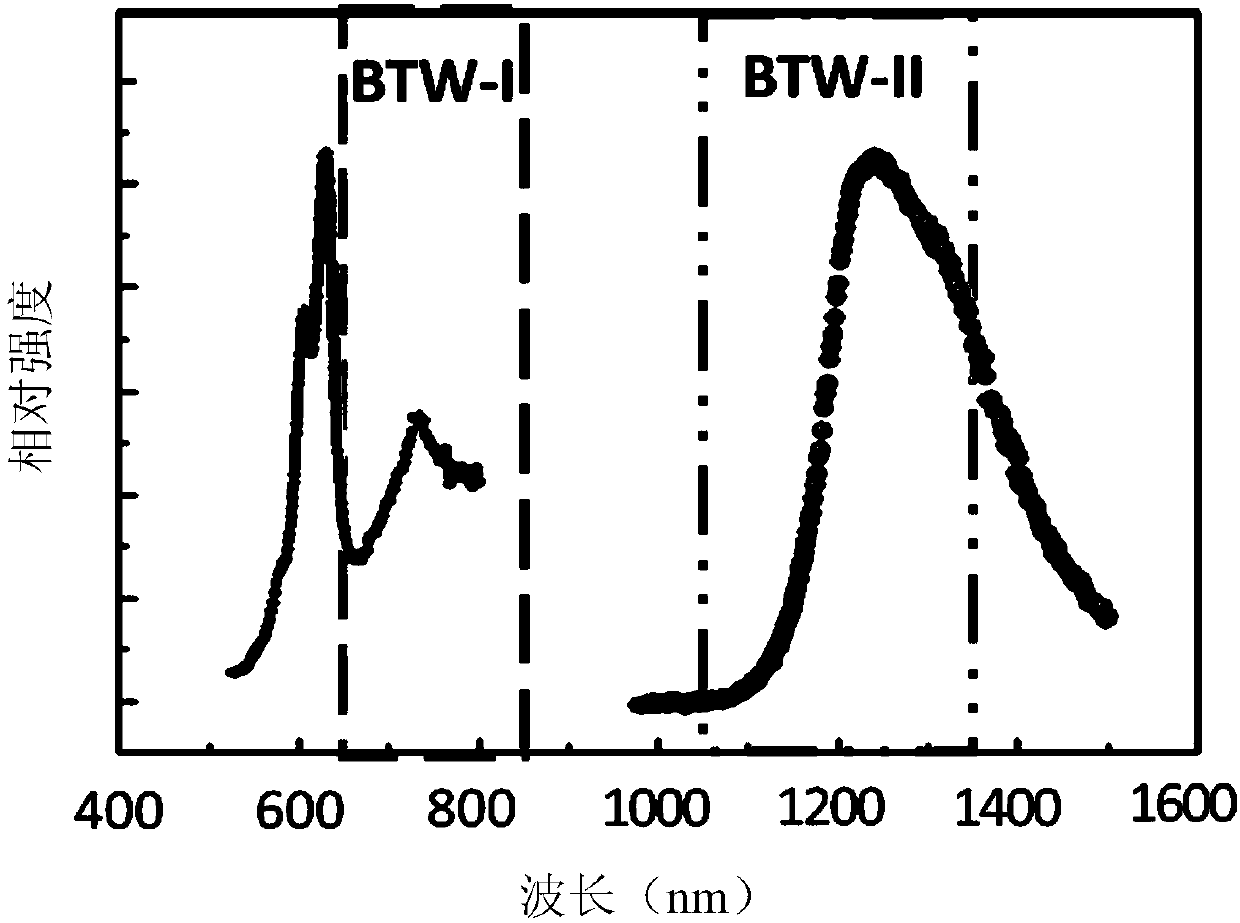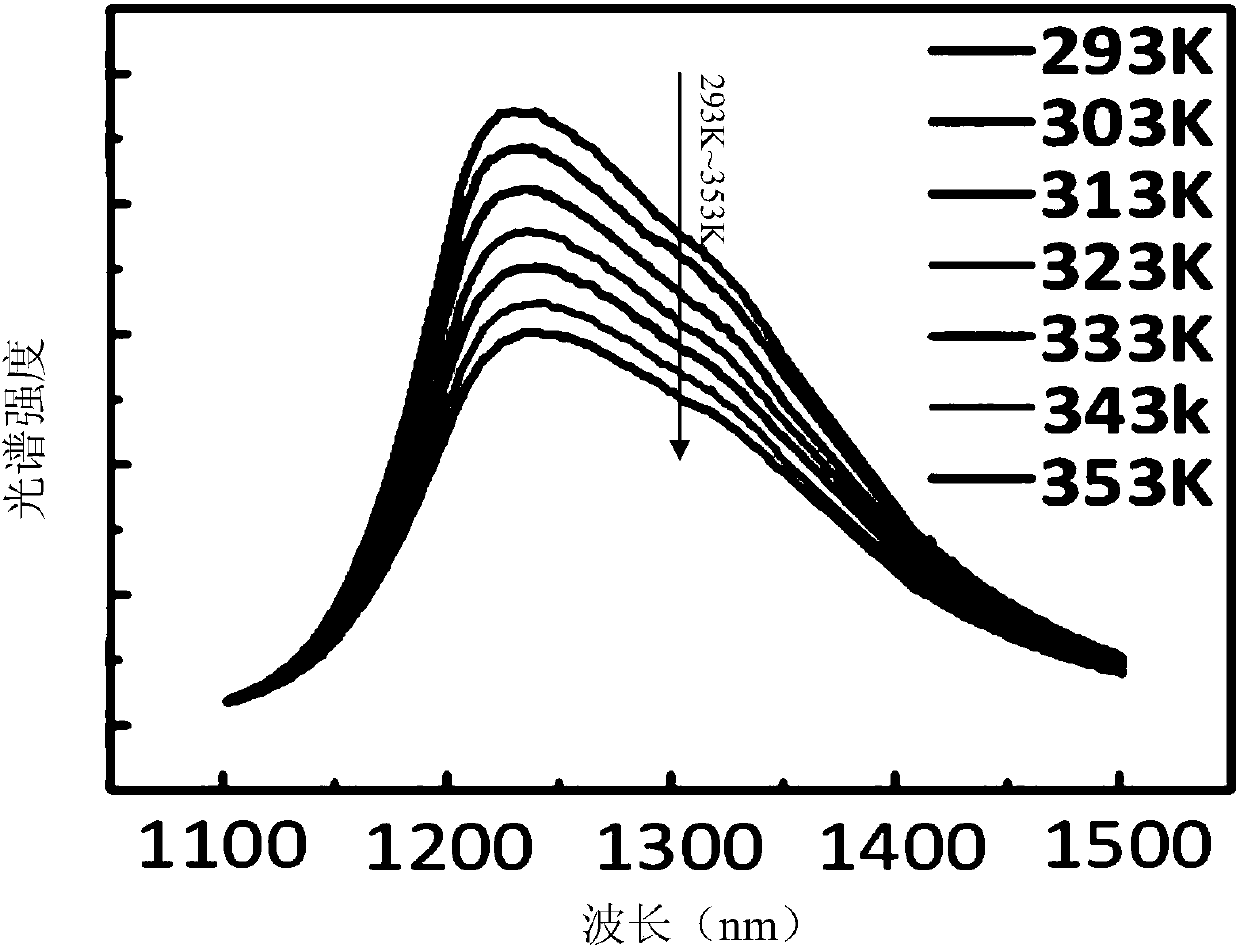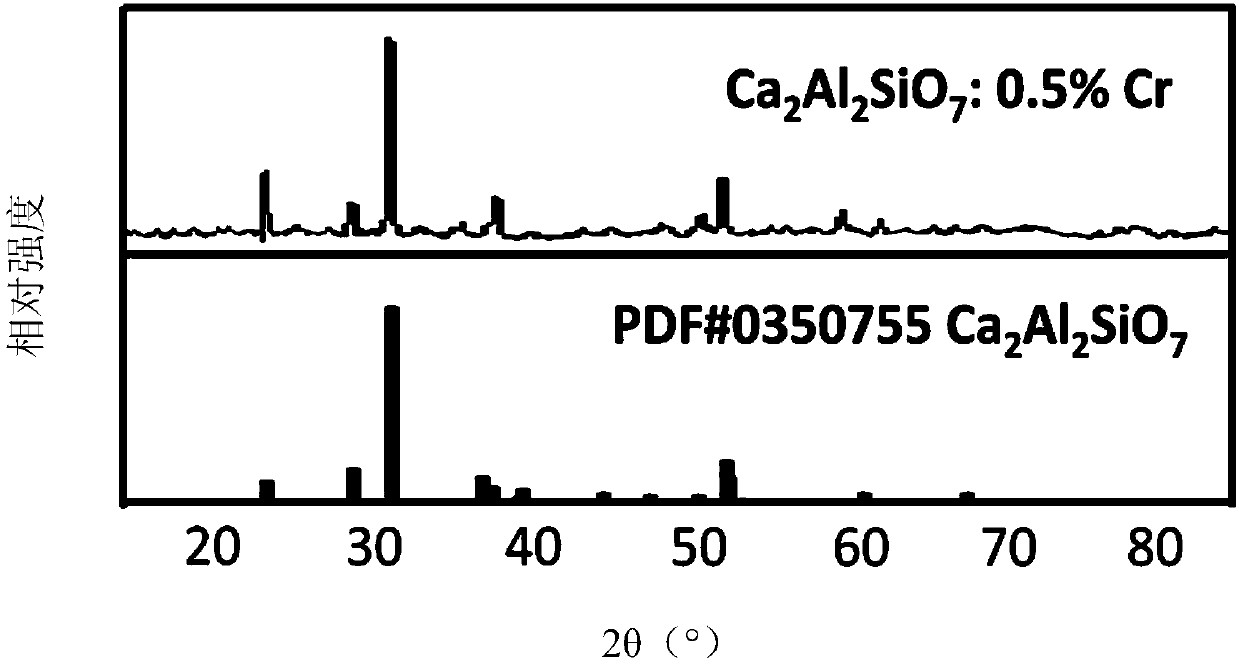Tetravalent chromium doped near infrared light-emitting temperature detecting nano material and preparation and application thereof
A nanomaterial, tetravalent chromium technology, applied in the field of near-infrared nano-fluorescent materials, can solve the problems of no high thermal sensitivity, no working area, high manufacturing cost, etc., to achieve high thermal sensitivity and expand the scope of research , the effect of deepening the penetration depth
- Summary
- Abstract
- Description
- Claims
- Application Information
AI Technical Summary
Problems solved by technology
Method used
Image
Examples
Embodiment 1
[0028] Cr in this example 4+ Activate the near-infrared luminescence temperature detection nanoparticle material of calcium aluminum silicate (that is, the near-infrared luminescence temperature detection nanoparticle material), and the matrix material is Ca 2 Al 2 SiO 7 , Cr 4+ The doping amount is 0.5mol%.
[0029] The Cr 4+ A method for preparing a near-infrared luminescent temperature detection nanoparticle material that activates calcium aluminum silicate, comprising the following steps:
[0030] (1) According to the stoichiometric number of the molecular formula of the matrix material and Cr 4+ Weigh calcium nitrate, aluminum nitrate, chromium nitrate (III) and silicic acid, then mix each material in deionized water (the volume ratio of the total mass of each material to deionized water is 1g: 15mL), in Stir at room temperature for 2 hours to obtain a mixture;
[0031] (2) transfer the mixture to 80°C oil bath and continue to stir for 24 hours, during which hydrog...
Embodiment 2
[0034] Cr in this example 4+ Activate the near-infrared luminescence temperature detection nanoparticle material of calcium aluminum silicate (that is, the near-infrared luminescence temperature detection nanoparticle material), and the matrix material is Ca 2 Al 2SiO 7 , Cr 4+ The doping amount is 2mol%.
[0035] The Cr 4+ A method for preparing a near-infrared luminescent temperature detection nanoparticle material that activates calcium aluminum silicate, comprising the following steps:
[0036] (1) According to the stoichiometric number of the molecular formula of the matrix material and Cr 4+ Weigh calcium nitrate, aluminum nitrate, chromium nitrate (III) and silicic acid, then mix each material in deionized water (the volume ratio of the total mass of each material to deionized water is 1g: 15mL), in Stir at room temperature for 2 hours to obtain a mixture;
[0037] (2) transfer the mixture to 80°C oil bath and continue to stir for 24 hours, during which hydrogen ...
Embodiment 3
[0040] Cr in this example 4+ Activate the near-infrared luminescence temperature detection nanoparticle material of calcium aluminum silicate (that is, the near-infrared luminescence temperature detection nanoparticle material), and the matrix material is Ca 2 Al 2 SiO 7 , Cr 4+ The doping amount is 0.1mol%.
[0041] The Cr 4+ A method for preparing a near-infrared luminescent temperature detection nanoparticle material that activates calcium aluminum silicate, comprising the following steps:
[0042] (1) According to the stoichiometric number of the molecular formula of the matrix material and Cr 4+ Weigh calcium nitrate, aluminum nitrate, chromium nitrate (III) and silicic acid, then mix each material in deionized water (the volume ratio of the total mass of each material to deionized water is 1g: 15mL), in Stir at room temperature for 2 hours to obtain a mixture;
[0043] (2) Transfer the mixture to an oil bath at 80°C and continue to stir for 24 hours, during which ...
PUM
 Login to View More
Login to View More Abstract
Description
Claims
Application Information
 Login to View More
Login to View More - R&D
- Intellectual Property
- Life Sciences
- Materials
- Tech Scout
- Unparalleled Data Quality
- Higher Quality Content
- 60% Fewer Hallucinations
Browse by: Latest US Patents, China's latest patents, Technical Efficacy Thesaurus, Application Domain, Technology Topic, Popular Technical Reports.
© 2025 PatSnap. All rights reserved.Legal|Privacy policy|Modern Slavery Act Transparency Statement|Sitemap|About US| Contact US: help@patsnap.com



